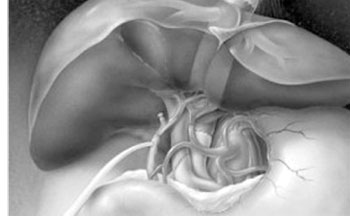|

Oral hygiene - myths and awareness
by Dr. Dheena Sadik
Oral hygiene has undoubtedly been a significant component of our
individual wellness and progress as an evolving species.
 According to Satish Goel who has 20 years' experience in the field
and being responsible for areas of freshness in oral care, basic oral
hygiene and essential Care, oral hygiene as "following a basic regime of
brushing properly. At the very basic level, cavities are the first and
biggest identifier of oral hygiene problems. So the absence of cavities
means strong and healthy teeth". According to Satish Goel who has 20 years' experience in the field
and being responsible for areas of freshness in oral care, basic oral
hygiene and essential Care, oral hygiene as "following a basic regime of
brushing properly. At the very basic level, cavities are the first and
biggest identifier of oral hygiene problems. So the absence of cavities
means strong and healthy teeth".
Goel heads a team of professionals who spearheads new product
development and critical changes in oral care products based in Mumbai,
India. During his recent visit to Sri Lanka, the Oral Care expert was
interviewed to share his diverse experiences and help create better
awareness.
In regard to observations related to dental hygiene problems in South
Asia, Dr. Goel admitted that Sri Lanka does not quite fall into the
gross generalisation of South Asia; "This is my first visit to Sri
Lanka. When I visited some consumers, they were quite aware of fluoride,
vitamins and gum problems which come with general awareness. I observed
an exceptional prevalence of 40 percent of people regularly brushing
their teeth, which is huge. This habit alone removes many problems by a
paradigm shift. As for the rest of South Asia, the biggest problems
start with the lack of awareness of the importance of oral care.
Majority doesn't brush their teeth and instead use tooth powder applied
to their finger.
Children are born with healthy teeth, so the dental care problems
start primarily with sugar which advance into cavity formation. Adults
anywhere in the world have two causes, one is age-related problems and
the other is habit-related."
As far as habits are concerned, Dr. Goel said, "There are two main
contributors - sugars and acidic foods. Both are harmful in major ways.
More bacteria are present in our oral cavities which feed on sugars
and convert to acids.
Acids in soft drinks are equally harmful. As for diet - what we eat,
how frequently we eat and the lifestyle aspects matter, i.e. - whether
or not one rinses the mouth after meals or practice advanced oral care
regimes of brushing with mouth wash and flossing teeth.
As a parent, if I don't have the habit of practising good oral care
and don't lead by example as a role model, my children are more likely
not to follow good oral hygiene as well."
As for myths that surround dental hygiene, indeed they are specific
to geographies. As far as the most common global oral hygiene myths, Dr.
Goel said, "the biggest myth is the assumption that one should visit
their dentist only when they have dental problems. Frequent visits to
the dentist, can prevent many cavities. This also includes people who
follow disciplined regimes in order to get professional cleaning.
The second common myth is regarding aging, that teeth are going to
weaken and fall off anyway and this creates a resignation of oral care
leading to neglect. With proper oral care, following an appropriate
regime can maintain good quality teeth throughout life.
In reality, the process of age-related problems can be significantly
slowed down by proper oral care. "
If there is one habit that can prevent most dental problems, Dr. Goel
said "it is the right manner, right frequency and use of right dental
products. Brushing too hard with excessive pressure, in a horizontal
direction with non-fluoridated toothpaste are not recommended.
As long as one follows the basic regime religiously, majority of
dental problems can be prevented.
The other important habit is to change the toothbrush every three
months before excessive wastage which usually applies excessive pressure
on gums. In addition to brushing, if one wants to go further, you should
use a mouthwash and flossing.
As far as teeth sensitivity is concerned, Dr. Goel said, "the most
common cause is unattended teeth. At the root it's all about bad oral
hygiene; Not brushing leads to plaque attacks, prolonged acid attacks
which weakens teeth and decays gums. Recession of gums exposes dentine
making teeth sensitivity. Cavity lead roots can also cause sensitivity.
Once sensitive, teeth are more temperature driven than pH driven."
Bad breath is a common oral complaint. Interestingly, Dr. Goel said
that bad breath is accepted in certain cultures, while not in others.
The odour is basically caused by Sulphur compounds and is also the
cause for various body odours. Prevention goes back to good oral care.
"You can never have a 100 percent germ free or suphur free
environment, so it's back to good oral cleaning. Fragranced mouthwashes
are helpful too."
When asked the effect of smoking on oral hygiene, Dr. Goel said
"Tobacco, either chewed or smoked leads to oral Cancer. So does
excessive betel chewing.
The simplest manifestation is extreme bad breathe."
As far as teeth discoloration, Dr. Goel explained , "there is a
natural colour of his or her own natural colour which is the dentine
showing through enamel. So aspire to your own colour than going for 100
percent white. What deteriorates the natural color is a lot related to
food habits and poor oral hygiene - be it red wine, coffee or curries -
i.e.: high staining foods.
" Dr. Goel said that in the past two decades the best thing that has
happened in the world of oral care is the effect of Fluoride. He said
research shows a clear decrease in oral diseases with uses of Fluoride
and hence advise us to use a fluoridated toothepaste.
As for teeth whitening agents, Dr. Goel admitted "Bleaching of teeth
have been done effectively by dentists for years.
There are a variety of ways and it's safe as long as done
professionally. However, this is a much harsher treatment, therefore
more prone to identify sensitivity, so I recommend taking your dentist's
advice."
With regards to South Asian regions' recent progress in terms of
dental care product development, Dr. Goel said "companies like Unilever,
strive to do two things- one is to roll out the best global technologies
developed - whether it is the basic regime or advanced regimes. Second,
we always strive to understand our consumers - locally and regionally so
we can adapt and cater to them.
That is part of the reason I have visited Sri Lanka, to understand
the consumers and serve them better. "
Giving birth to large infants increases breast cancer risk
Delivering a high-birth-weight infant more than doubles a woman's
breast cancer risk, according to research from the University of Texas
Medical Branch at Galveston.
 Researchers suggest that having a large infant is associated with a
hormonal environment during pregnancy that favors future breast cancer
development and progression. Researchers suggest that having a large infant is associated with a
hormonal environment during pregnancy that favors future breast cancer
development and progression.
Marking the first time that high birth weight was shown to be an
independent risk factor, the finding may help improve prediction and
prevention of breast cancer decades before its onset.
"We also found that women delivering large babies - those in the top
quintile of this study, which included babies whose weight was 8.25 or
more pounds - have increased levels of hormones that create a
'pro-carcinogenic environment.'
This means that they have high levels of estrogen, low levels of
anti-estrogen and the presence of free insulin-like growth factors
associated with breast cancer development and progression," said lead
author Dr. Radek Bukowski, professor of obstetrics and gynecology in the
Division of Maternal-Fetal Medicine.
"Women can't alter their pregnancy hormones, but can take steps to
increase their general protection against breast cancer." Dr. Bukowski
notes that breastfeeding, having more than one child, following a
healthy diet and exercising have been shown to reduce breast cancer
risk.
The study, published in *PLoS ONE*, builds on accumulating evidence
that a woman's own birth weight and that of her children are linked to
breast cancer. However, this is the first study to explore whether each
is an independent risk factor. Dr. Bukowski's team examined two cohorts
of women from distinct data sets:
- The Framingham Offspring Birth History Study, which has studied
generations of women via medical examinations and laboratory
assessments.
Dr. Bukowski's team studied 410 women from this study, observed
between 1991-2008, and maternal birth weight, infant birth weight and
results of later examinations (e.g., breast cancer diagnosis) to
determine breast cancer risk.
The researchers also looked at data from the study on known breast
cancer risk factors, such as age, race/ethnicity, body mass index,
diabetes, use of hormone replacement therapy and maternal history of the
disease, among others.
- The First and Second Trimester Evaluation of Risk for Aneuploidy
(FASTER) trial, which examined pregnancy hormones in nearly 24,000 women
at 15 U.S. clinical centers between 1999 and 2003.
The study included assessments of the hormones that affect infant
birth weight and breast cancer risk - estriol (E3), anti-estrogen
alpha-fetoprotein (AFP) and pregnancy-associated plasma protein-A
(PAPP-A).
Approximately 7.6 percent of the women from the Framingham cohort in
this study were later diagnosed with breast cancer.
The researchers found that the risk of breast cancer was
two-and-a-half times higher in women whose infant's birth weight was in
the top quintile compared with women whose infant weighed in the lower
quintiles. Importantly, the risk was shown to be signficiant independent
of the birth weight of the mother and traditional breast cancer risk
factors.
Of the nearly 24,000 pregnancies studied in the FASTER trial, a
strong positive relationship was observed between infant birth weight
and E3, AFP and PAPP-A concentrations.
For women whose infant's birth weight was in the highest quintile,
there was a 25 percent increased risk of having a high E3/AFP ratio and
PAPP-A concentration.
"Recent animal studies have suggested that breast stem cells, which
are involved in the origins of breast cancer, may increase or decrease
their number in response to hormone exposures, including ones during
pregnancy," added Dr. Bukowski. â
"They retain a 'memory' of prior hormone exposure, which could
explain the increased risk of breast cancer seen following pregnancy,
especially in women with a large birth weight infant.
The hormones create a long term effect that may lead to breast cancer
later."
One limitation of this study is that the associations between large
infants' birth weight and breast cancer risk and between infants' birth
weight and hormonal environment during pregnancy were tested in
different populations of women. Further research is needed to
definitively demonstrate that the concentrations of pregnancy hormones
mediates the relationship between large infant birth weight and breast
cancer.
Subsequent studies will also focus on testing whether having an
infant of high birth weight improves prediction of future breast cancer.
- MNT
New therapeutic target for diabetes management
Scientists from Western University in London, Canada and the
Children's Health Research Institute, an Institute within the Lawson
Health Research Institute, have identified the critical role of a
receptor called c-Kit in the development and function of
insulin-producing beta cells, making it an exciting therapeutic target
for the management of diabetes.
 The research, led by Rennian Wang, demonstrated that over-expression
of c-Kit not only leads to increased insulin production but also
counteracts the early diabetic effects of a high-fat diet. The paper and
an accompanying commentary, are published in the August issue of
*Diabetologia*, and featured in the Research Highlights in *Nature
Reviews Endocrinology*. Diabetes is one of the most common metabolic
diseases affecting over 25 million Americans and 2 million Canadians. The research, led by Rennian Wang, demonstrated that over-expression
of c-Kit not only leads to increased insulin production but also
counteracts the early diabetic effects of a high-fat diet. The paper and
an accompanying commentary, are published in the August issue of
*Diabetologia*, and featured in the Research Highlights in *Nature
Reviews Endocrinology*. Diabetes is one of the most common metabolic
diseases affecting over 25 million Americans and 2 million Canadians.
It's associated with a multitude of complications leading to
considerable morbidity and a major medical as well as financial burden
on society.
One of the major defects in diabetes is the loss of beta cells in the
pancreatic islet. Wang and colleagues, including Zhi Chao Feng, a PhD
candidate and first author on the paper, developed a transgenic mouse
model (c-Kit Wv) which overexpressed c-Kit, specifically in beta cells.
"When c-Kit is overexpressed, we observed a significant improvement in
beta cell function and survival," says Wang, a Professor in the
Departments of Physiology and Pharmacology, and Medicine at Western's
Schulich School of Medicine & Dentistry.
"You can even rescue c-Kit mutant mice from the early onset of
diabetes, and protect against high-fat diet-induced beta cell defects.
This is a novel finding and is being reported for the first
time."Wang believes ongoing research into c-Kit and its underlying
mechanisms, will pave the way to develop strategies to preserve and
restore function to beta cells as a cure for both type 1 and type 2
diabetes.
This study was funded by the Canadian Institutes of Health Research.
- diabetes.alltop
Liver cancer risk may be reduced by Vitamin E
High consumption of vitamin E either from diet or vitamin supplements
may lower the risk of liver cancer, according to a study published in
the Journal of the National Cancer Institute.
 Liver cancer is the third most common cause of cancer mortality in
the world, the fifth most common cancer found in men and the seventh
most common in women. Liver cancer is the third most common cause of cancer mortality in
the world, the fifth most common cancer found in men and the seventh
most common in women.
Approximately 85 p.c. of liver cancers occur in developing nations,
with 54 p.c. in China alone. Some epidemiological studies have been done
to examine the relationship between vitamin E intake and liver cancer;
however, the results have been inconsistent.
To determine the relationship between vitamin E intake and liver
cancer risk, Wei Zhang, MD, MPH., of the Shanghai Cancer Institute,
Renji Hospital, Shanghai Jiaotong University School of Medicine and
colleagues analysed data from a 132,837 individuals in China who were
enrolled in the Shanghai Women's Health Study (SWHS) from 1997-2000 or
the Shanghai Men's Health Study (SMHS) from 2002-2006, two
population-based cohort studies jointly conducted by the Shanghai Cancer
Institute and Vanderbilt University.
Using validated food-frequency questionnaires, the researchers
conducted in-person interviews to gather data on study participants'
dietary habits.
They compared liver cancer risk among participants who had high
intake of vitamin E with those with low intake. The analysis included
267 liver cancer patients (118 women and 149 men) who were diagnosed
between two years after study enrollment and an average of 10.9 (SWHS)
or 5.5 (SMHS) years of follow-up. Vitamin E intake from diet and vitamin
E supplement use were both associated with a lower risk of liver cancer.
This association was consistent among participants with and without
self-reported liver disease or a family history of liver cancer.
"We found a clear, inverse dose-response relation between vitamin E
intake and liver cancer risk," the authors write, noting a small
difference between men and women in the risk estimate, which is likely
attributable to fewer liver cancer cases having occurred among SMHS
participants due to the shorter follow-up period. Overall, the take home
message is that, "high intake of vitamin E either from diet or
supplements was related to lower risk of liver cancer in middle-aged or
older people from China.
- MNT
Why online self-diagnosis could be bad for health
 Consumers who self-diagnose are more likely to believe they have a
serious illness because they focus on their symptoms rather than the
likelihood of a particular disease, according to a new study. This has
significant implications for public health professionals as well as
consumers. Consumers who self-diagnose are more likely to believe they have a
serious illness because they focus on their symptoms rather than the
likelihood of a particular disease, according to a new study. This has
significant implications for public health professionals as well as
consumers.
"In today's wired world, self-diagnosis via internet search is very
common. Such symptom- matching exercises may lead consumers to
overestimate the likelihood of getting a serious disease because they
focus on their symptoms while ignoring the very low likelihood that
their symptoms are related to any serious illness," write Dengfeng Yan
and Jaideep Sengupta (both Hong Kong University of Science and
Technology).Consumers often fear the worst when it comes to their own
health while maintaining a calm objectivity with regard to others. For
example, when someone else suffers from indigestion, we tend to
accurately perceive it as indigestion, but experiencing the same symptom
might lead us to panic and worry that we're having a heart attack.
The authors asked consumers to imagine that they or someone else were
suffering from common symptoms such as cough, fever, runny nose, and
headache.They were then asked to assess the likelihood that they or the
other person had contracted either H1N1 (swine flu) or regular flu
.Consumers were much more accurate when assessing other people's
symptoms. Since they are more likely to misdiagnose themselves,
consumers may end up taking unnecessary medical action, which is bad for
them, and also bad from a societal cost perspective.
- Healthnewszone |

